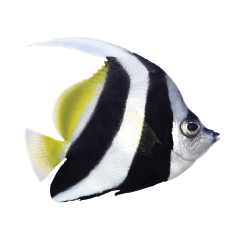Project News ·
Citizen scientists support water quality research
Burdekin grazier Glen Rea has been at the forefront of water quality monitoring in the region for nearly 20 years.
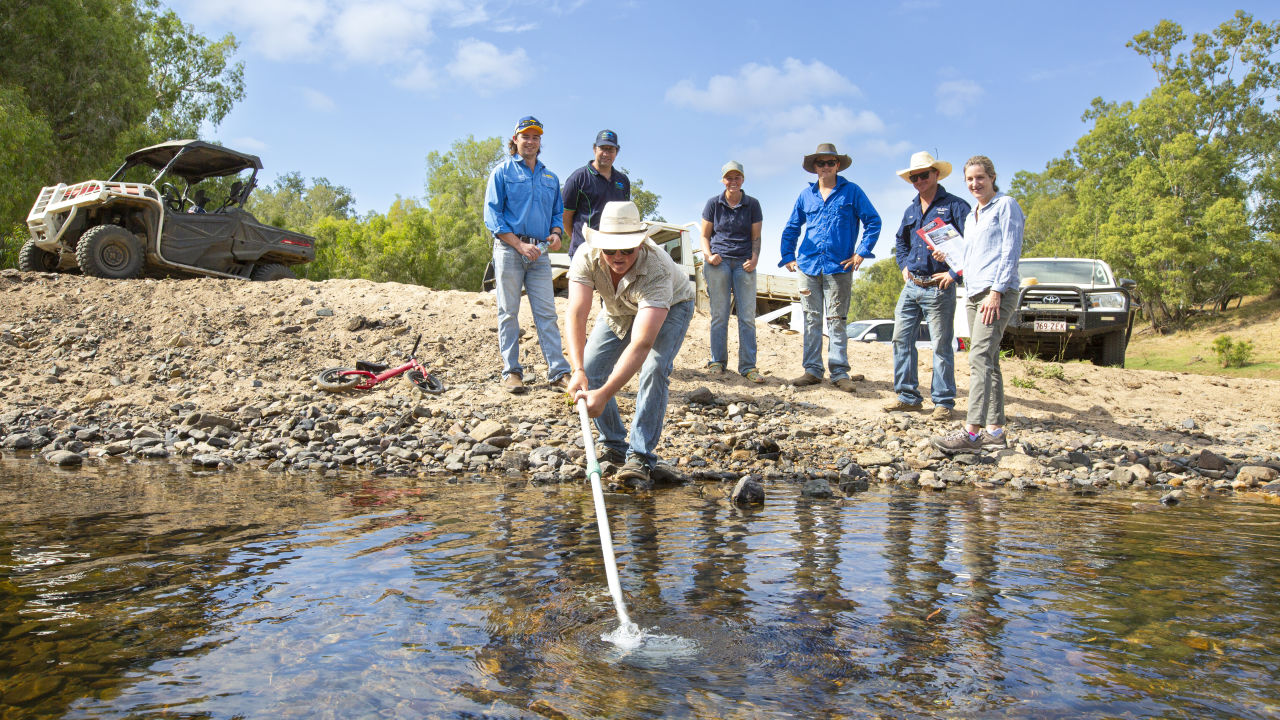
Graziers are playing a vital role in improving water quality and protecting the Great Barrier Reef by combining scientific research with sustainable land management.
Working with James Cook University's Centre for Tropical Water and Aquatic Ecosystem Research (TropWATER), graziers are using citizen science to develop a detailed, evidence-based understanding of water quality.
Through a Community Water Quality Monitoring Group, Burdekin graziers are using citizen science to help distinguish perception from reality about the effect of grazing on sediment runoff.
Water quality monitoring is essential for environmental protection, effective catchment management, and identifying pollution events that impact on ecosystem health. By empowering graziers with scientific training and tools, the project also strengthens community education and environmental stewardship.
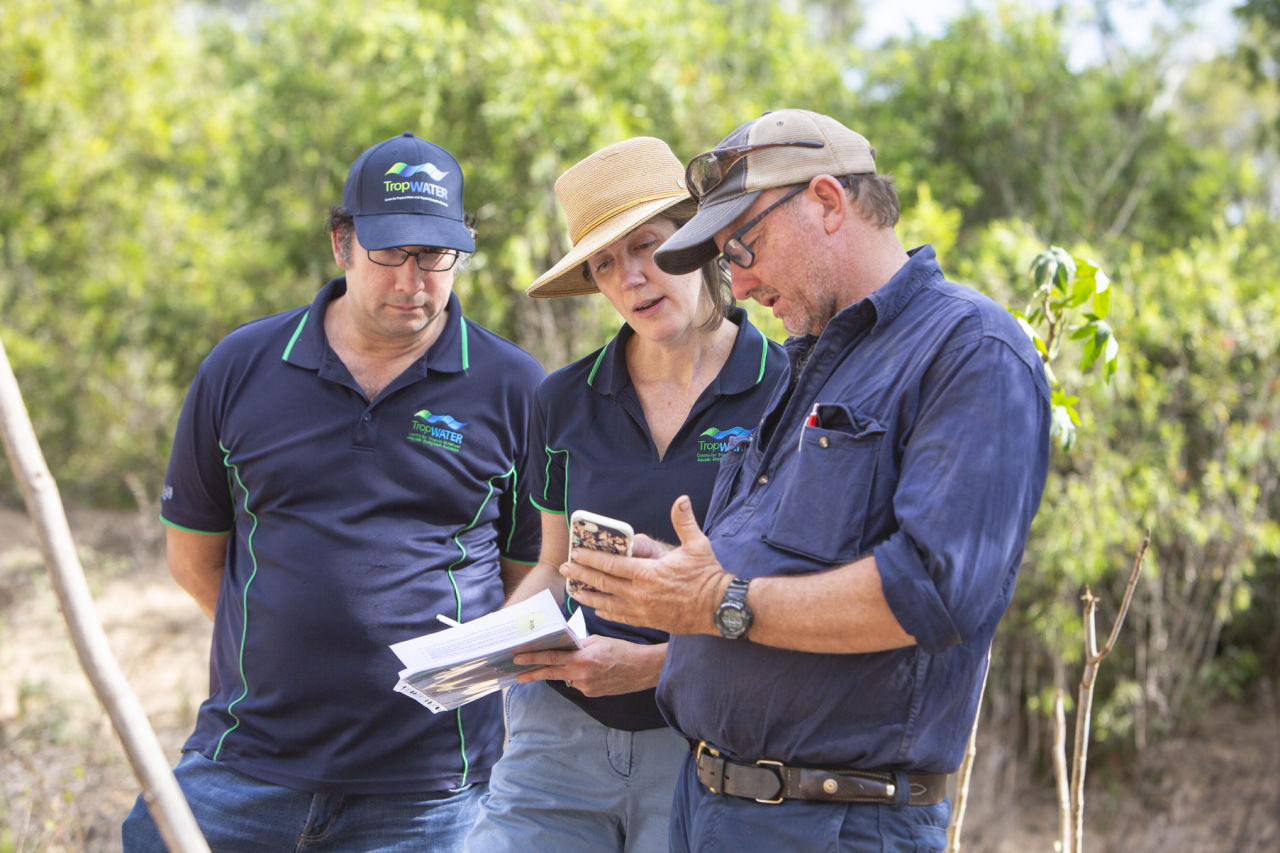
Kirknie Station grazier Glen Rea, with TropWATER scientists Steve Lewis (left) and Zoe Bainbridge, at the Bogie River water monitoring site where he collects samples. NQ Dry Tropics
Since 2005, Burdekin grazier Glen Rea has been a part of the Community Water Quality Monitoring Group. On his grazing property, Kirknie Station, located on Birriah Country along the Bogie and Burdekin rivers, Glen has collected water samples for nearly two decades.
His goal was to gain a deeper insight into water quality variations throughout the Burdekin region and contribute site-specific data to improve the accuracy of models and research.
“I’ve found it fascinating to learn about coral core sampling and how it reveals sediment deposits, providing insights into past environmental conditions, including sediment accumulation rates,” Glen said.
By comparing data from his property with the broader Burdekin and Bowen Broken and Bogie (BBB) catchment results, Glen has refined his land management approach, boosted productivity and long-term land condition, and reduced runoff.
“Understanding how fine sediments behave differently from coarse sediments has been particularly relevant as a grazier working to manage my land. It has confirmed that strategies like fencing off waterways and maintaining ground cover through dry periods play a key role in keeping soil on land and reducing runoff,” he said.
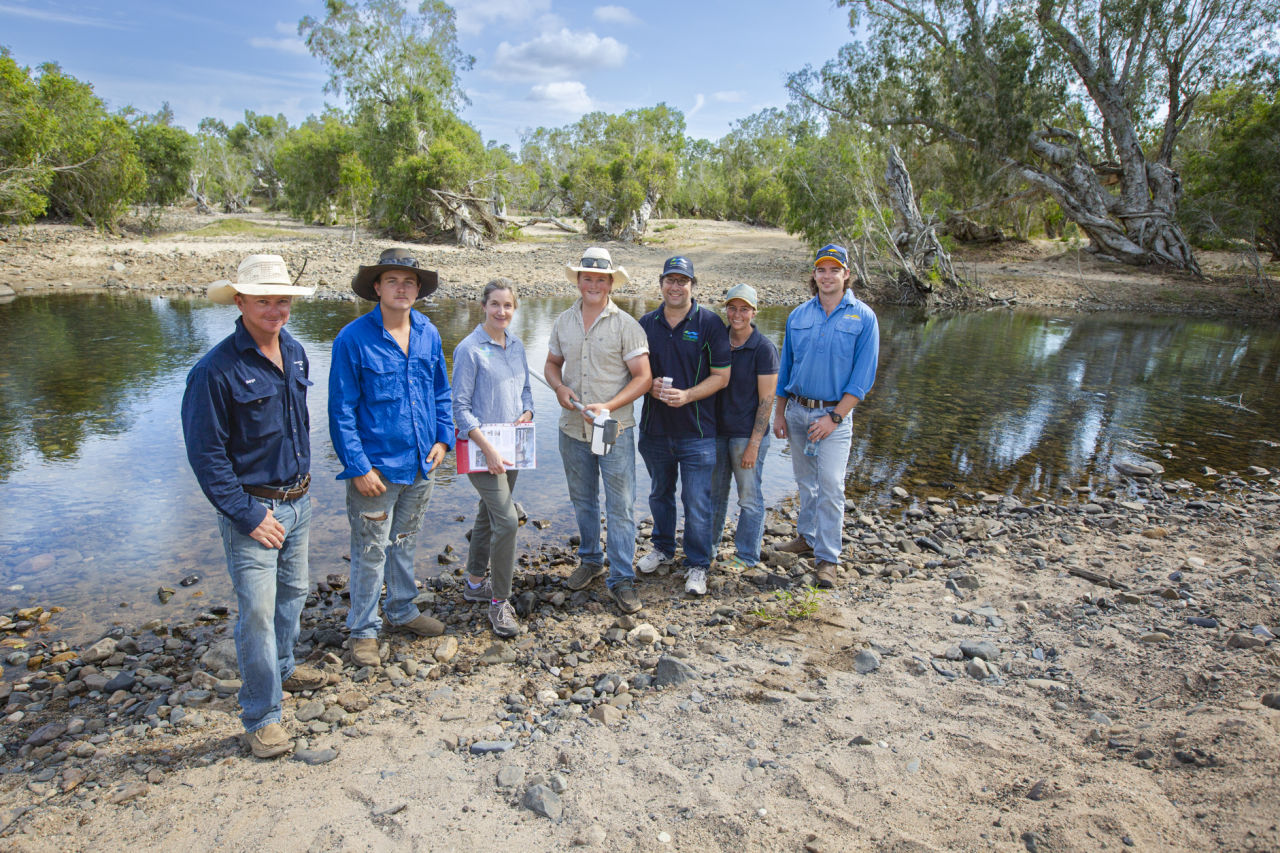
Pictured R-L Tristan Gibson, NQ Dry Tropics, Olivia Burgess, Stephen Lewis, TropWATER, Bo Burgess, Zoe Bainbridge, TropWATER and Billy and Cody Burgess. NQ Dry Tropics
TropWATER researchers have trained graziers in sampling design, equipment use, data analysis, interpretation, and communication ensuring the data they collect meets scientific standards. This high-quality, consistent data helps identify sediment hotspots, refine catchment modelling, and ensure accurate, credible communication of findings.
“Working with TropWATER has been a great experience,” he said. “The scientists explain complex findings in a way that is easy to understand and that means we can make informed decisions about our business operations.”
The latest Community Water Quality Monitoring Group was established in 2018 through NQ Dry Tropics’ Landholder Driving Change program. From 2020 to 2025, the Group has been supported by the Bowen Broken and Bogie (BBB) Water Quality Program, funded by the partnership between the Australian Government’s Reef Trust and the Great Barrier Reef Foundation.
Glen believes graziers’ active involvement has helped shift perceptions. “By participating in citizen science, we’re not just sitting back, we’re helping develop practical, on-ground solutions. This strengthens our industry’s credibility and demonstrates our commitment to sustainable land management.”
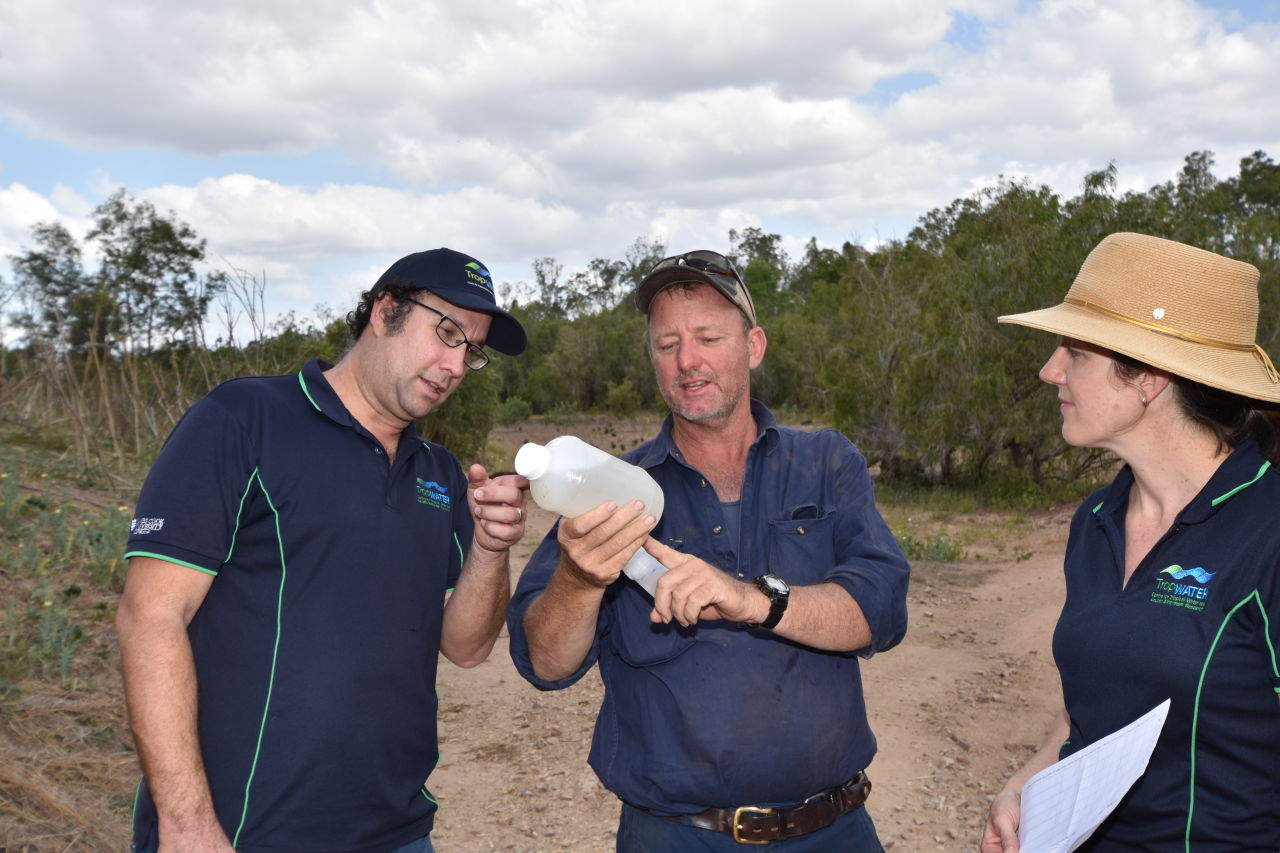
TropWATER scientist Steve Lewis (left) Kirknie Station grazier Glen Rea, and TropWATER scientist Zoe Bainbridge. NQ Dry Tropics
Glen also notes that sediment loss is a complex issue, not simply a result of grazing. “Sediment comes from hillslope, streambank, and gully erosion, and the Burdekin Basin is known for its complex and highly erodible gully systems. The situation is more nuanced than some suggest.”
Water quality improvement programs across the region now rehabilitate and monitor a wide range of small, medium, and large gullies to reduce sediment loss and improve water quality flowing to the reef.
“Everyone involved is learning what works and what doesn’t,” said Glen. “It takes a collective effort, from government, industry, science, ecological engineers, contractors, and natural resource management, to address the issue.”
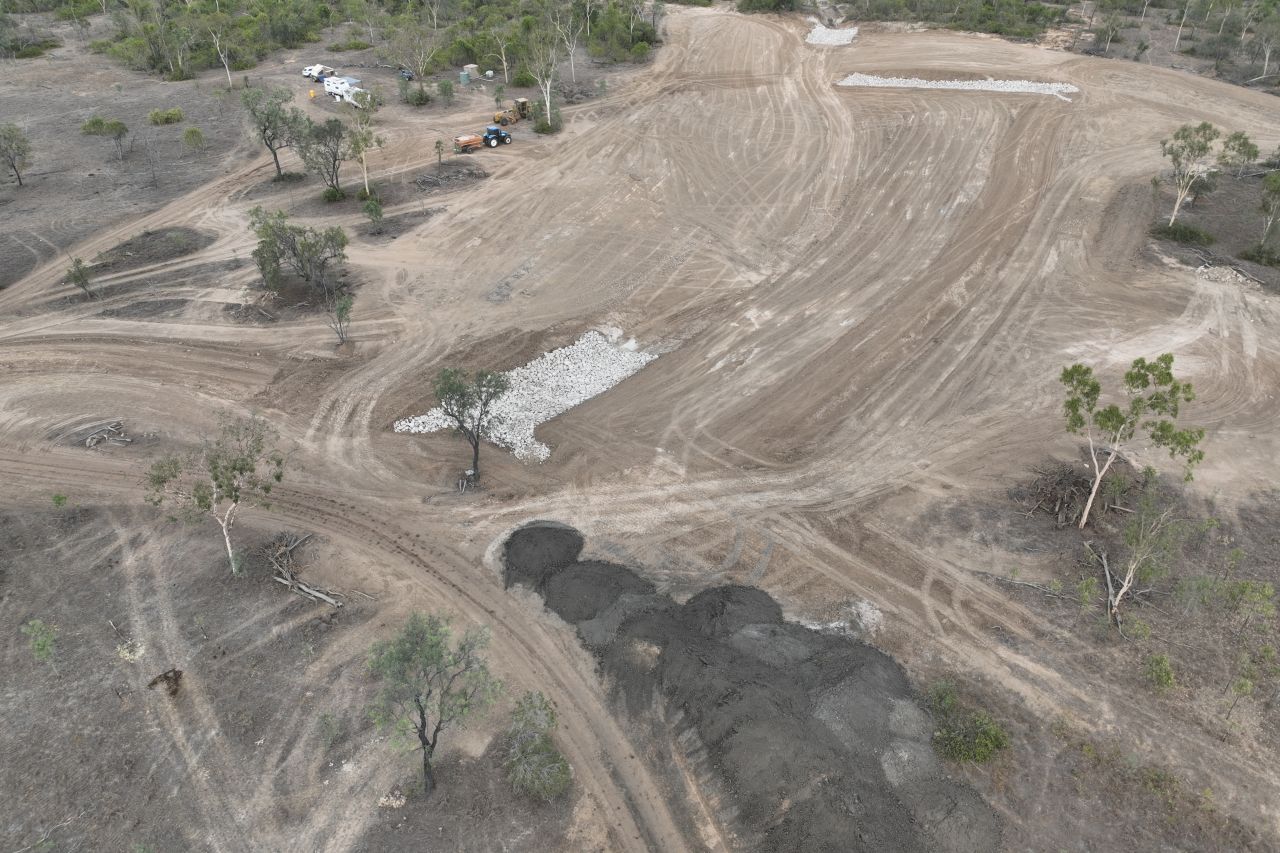
Restoration works underway at Kirknie. Neilly Group Engineering
Read about the landscape restoration work undertaken on Kirknie Station to rehabilitate a series of three large alluvial gullies
#Related
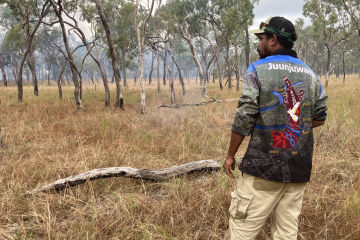
Project News ·
Community at the forefront of Reef water quality protection

Project News ·
